I remember as a kid, my grandmother would make us drink sauerkraut juice, or she would use it to flavor a soup, and I absolutely loved it. I always have preferred a sour pickle flavor over something sweet.
But she also had our health in mind, as these good acids and probiotics are good for your gut. Vinegars are a sour liquid obtained by fermentation of diluted alcoholic liquids and used as a condiment or preservative. Vinegars typically contain 5-8% acetic acid by volume. Usually the acetic acid is procured by the fermentation of ethanol or sugars by acetic acid bacteria. That is quite a mouthful of a sentence. So, I'll explain how we use vinegar from a chef's point of view.
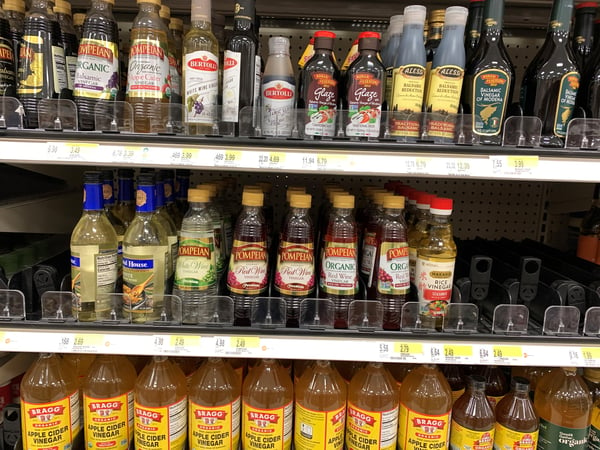 You will probably use vinegars most when making a vinaigrette or pickling fruits and vegetables. We also add vinegars to soups and stews, deglaze pans with them or simply drizzle malt vinegar over the famous fish and chips. So delicious!
You will probably use vinegars most when making a vinaigrette or pickling fruits and vegetables. We also add vinegars to soups and stews, deglaze pans with them or simply drizzle malt vinegar over the famous fish and chips. So delicious!
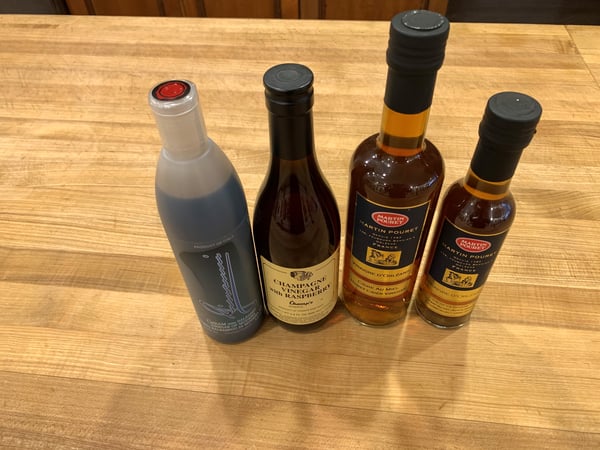 Here are some of the top vinegars we sell at The Chopping Block and how to use each.
Here are some of the top vinegars we sell at The Chopping Block and how to use each.
The standard ratio for making vinaigrette is one part acid to three parts oil. That will make a great vinaigrette, but of course, you can tweak the ratio to your liking. If you like a more tart dressing, increase the amount of acid and reduce the amount of oil. In this post, I am sharing a simple salad using apple cider vinegar to make a vinaigrette, which also includes a mustard emulsifier and honey. Apple cider vinegar is a great all-around vinegar so always make sure to have some in your pantry.
The balsamic vinegar is a lot stronger in acidity, and one of the best ones come from Modena in Italy, where they have truly mastered the craft of making vinegar.
Another great option is Cream of Balsamic, a staple at The Chopping Block. This is a reduced balsamic vinegar, so it has a creamy texture and is easy to use in so many ways. You can drizzle it on its own over grilled or sliced fruit, or salad greens. Once opened, store it in your refrigerator.
Champagne vinegar which kind of stands between apple cider vinegar and balsamic vinegar.
There's red wine vinegar as well, which is great for pickling. For me, it is all about the taste. So, I would recommend going to a store where you are able to taste different vinegars. When you find one or more you like, experiment with them. There are also fruit-based vinegars. For example using a raspberry vinegar in a dressing is the perfect complement to a salad with goat cheese.
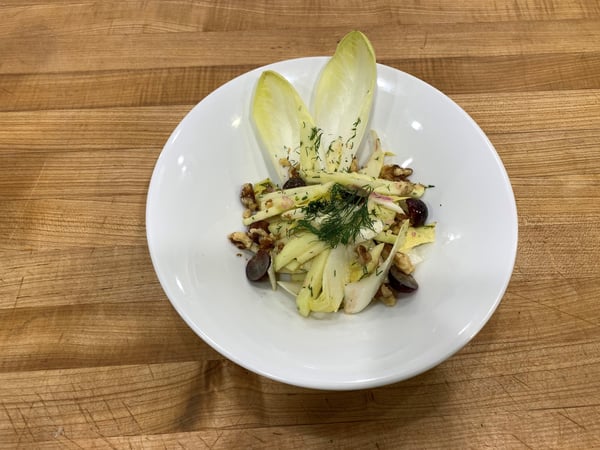
Apple-Endive Salad
Scroll down for a printable version of this recipe
Yield: 4-6 servings
Active time: 25 minutes
Start to finish: 25 minutes
For the vinaigrette:
1/4 cup apple cider vinegar
1 tablespoon Dijon mustard
1 teaspoon honey
1 small shallot, minced
1/3 to 1/2 cup extra virgin olive oil
Salt and pepper to taste
For the salad:
1/3 cup walnuts, toasted and rough chopped
3 heads Belgian endive, thinly sliced
2 Granny Smith apples, julienned
1 teaspoon fresh dill, rough chopped
1 cup red grapes, halved
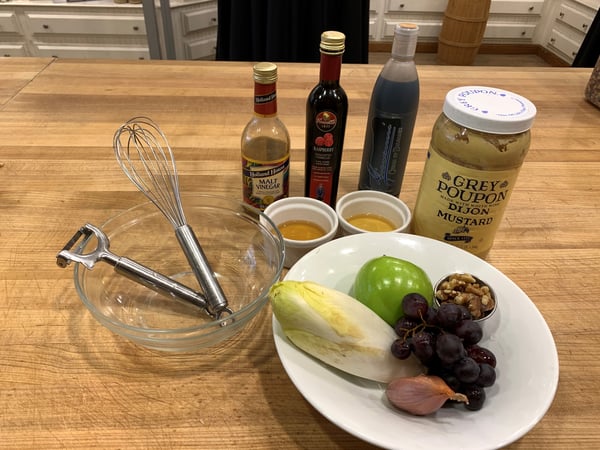
- To prepare the vinaigrette, whisk together the apple cider vinegar, Dijon, honey and shallot in a medium-size bowl. Slowly drizzle in the olive oil while whisking vigorously to create an emulsion. Season with salt and pepper to taste, and set aside.
- In a large bowl, toss together the walnuts, endive, apples, dill and grapes. Dress with just enough of the vinaigrette to coat.
- Serve just slightly chilled or room temperature.
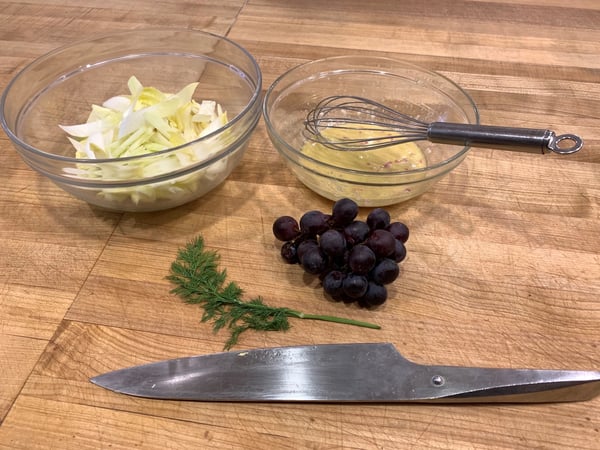
Quick Pickled Onions and Fennel
Yield: 1 1/2 cups
Active time: 15 minutes
Start to finish: 2 hours, 15 minutes
3 cups red wine vinegar
1/2 cup granulated sugar
5 teaspoons kosher salt
3 sprigs dill
1 teaspoon coriander seeds
1 teaspoon black peppercorns
1 small red onion, halved, peeled and thinly sliced
1 fennel bulb, halved, cored and layers thinly sliced
- To make the pickle brine, measure together the vinegar, sugar, salt, dill, coriander and black peppercorns in a small saucepan. Place over medium-high heat, and cook, stirring to dissolve, until hot.
- Place the onions and fennel in a small bowl, and pour the hot brine over the vegetables. Allow to pickle, refrigerated, for at least 2 hours before serving.
You can learn how to balance flavors in our popular Flavor Dynamics class, which we are now offering virtually. In this class, you learn about different tastes and how to balance flavors. Oils, vinegars, herbs and spices play a big part in this class. Once you know how to make substitutions, you'll no longer be tied to following recipes to the letter. Join us for virtual Flavor Dynamics on Saturday, March 27 at 11am CST.
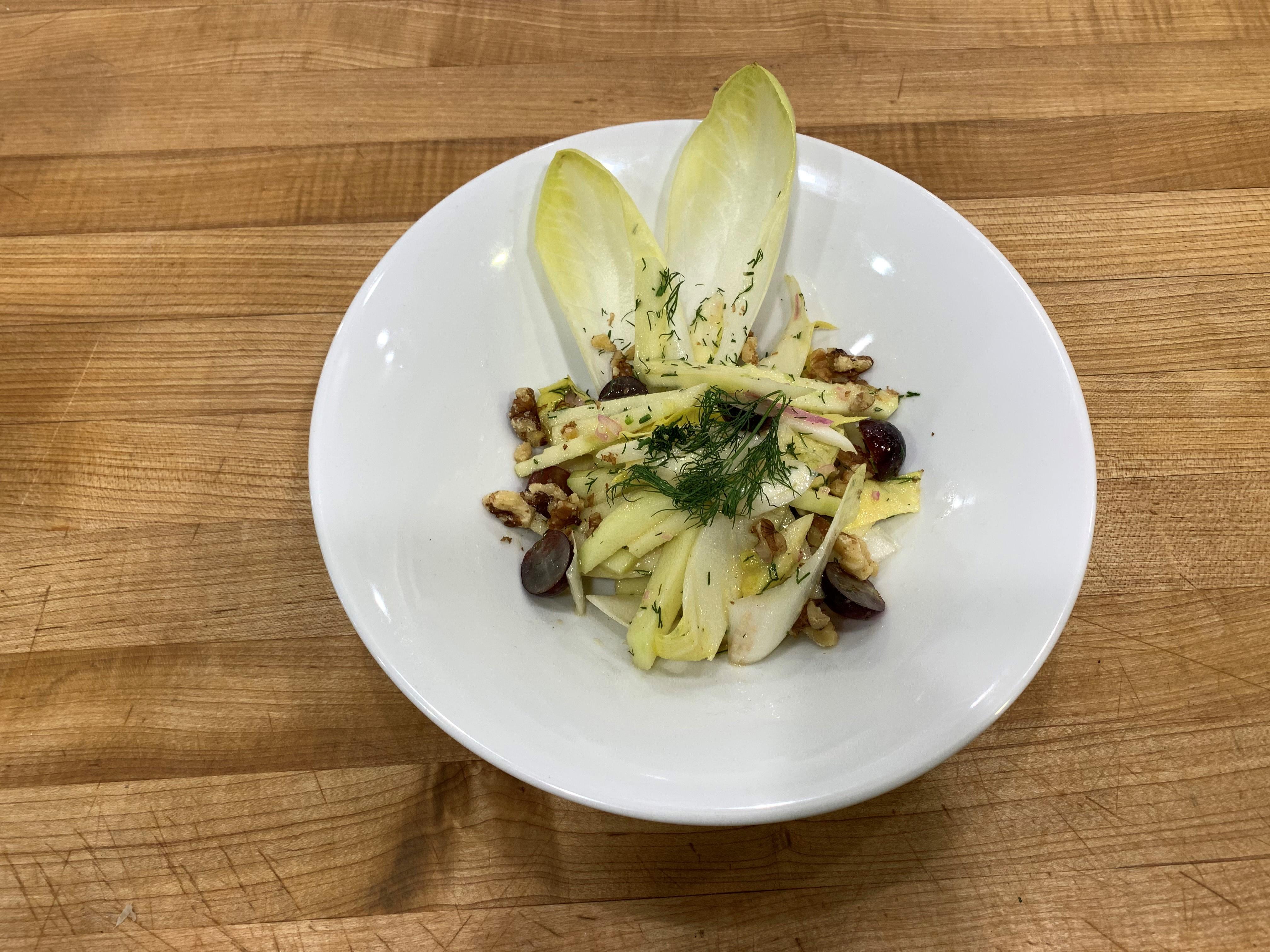
Apple-Endive Salad
Ingredients
- 1/4 cup apple cider vinegar
- 1 tablespoon Dijon mustard
- 1 teaspoon honey
- 1 small shallot, minced
- 1/3 to 1/2 cup extra virgin olive oil
- Salt and pepper to taste
- 1/3 cup walnuts, toasted and rough chopped
- 3 heads Belgian endive, thinly sliced
- 2 Granny Smith apples, julienned
- 1 teaspoon fresh dill, rough chopped
- 1 cup red grapes, halved
Instructions
- To prepare the vinaigrette, whisk together the apple cider vinegar, Dijon, honey and shallot in a medium-size bowl. Slowly drizzle in the olive oil while whisking vigorously to create an emulsion. Season with salt and pepper to taste, and set aside.
- In a large bowl, toss together the walnuts, endive, apples, dill and grapes. Dress with just enough of the vinaigrette to coat.
- Serve just slightly chilled or room temperature.











